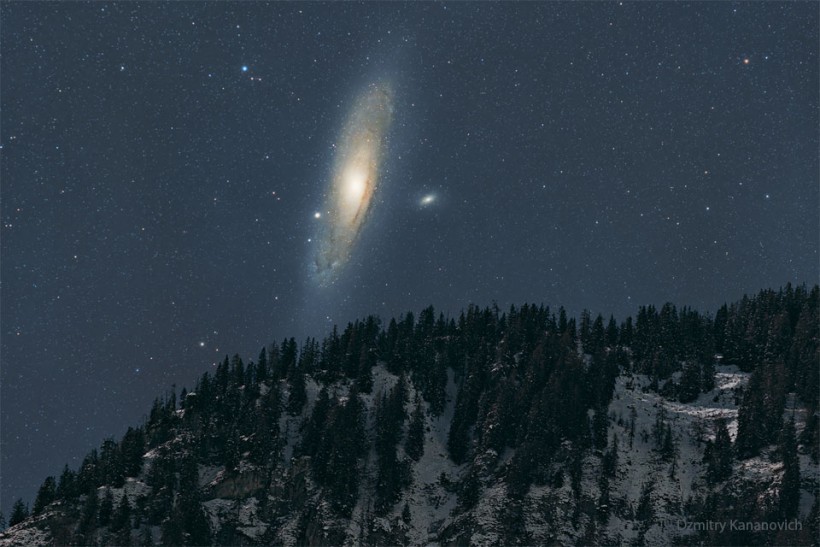NASA's Picture of the Day presents a captivating view of the Andromeda Galaxy gracing the night sky over the majestic Alps.
This breathtaking image, captured by Dzmitry Kananovich, offers a glimpse into the cosmic dance of galaxies, showcasing the sheer beauty of our neighboring galactic companion against the backdrop of the iconic Swiss mountain range.

Andromeda in the Alps
Andromeda, also known as Messier 31 (M31), is a sprawling spiral galaxy located approximately 2.5 million light-years away from Earth. While the unaided eye may perceive it as a faint and fuzzy blob, the light that reaches us has traversed an extraordinary journey spanning over two million years, making it a direct encounter with the ancient past.
The featured image, taken just before Andromeda gracefully disappeared behind the Swiss Alps, unveils the galaxy's intricate details, transforming it from a distant cosmic neighbor into a captivating celestial masterpiece.
The photograph is a result of meticulous craftsmanship, combining foreground and background images seamlessly captured with the same camera and from the exact location.
This cosmic portrait serves as a testament to the power of long-duration camera exposures, allowing us to witness the unseen facets of the universe. The mesmerizing details of Andromeda illuminated through Kananovich's lens, reveal the inherent beauty and complexity of galaxies that often elude the naked eye.
While the image enchants with its celestial allure, it also carries a subtle reminder of the vast timescales at play in the cosmos. Recent astronomical data hint at a cosmic collision on the distant horizon - a phenomenon where our very own Milky Way Galaxy is destined to collide and coalesce with the Andromeda Galaxy in a cosmic ballet that will unfold over the course of billions of years.
Read Also: NASA Webb, Hubble Join Forces to Unveil the Most Colorful Image of the Universe!
Fun Facts About the Andromeda Galaxy
1. Larger than the Milky Way: The Andromeda Galaxy is larger than the Milky Way. It has a diameter of about 220,000 light-years, making it the largest galaxy in our local group, which also includes the Milky Way, the Triangulum Galaxy, and about 54 other smaller galaxies
2. Cosmic Collision on the Horizon: Experts believe that the Andromeda Galaxy is on a collision course with the Milky Way. Over the course of billions of years, these two galaxies are expected to merge into a single, larger galaxy often referred to as "Milkomeda" or "Milkdromeda." This cosmic collision is estimated to occur in about 4 billion years.
3. Visible to the Naked Eye: The Andromeda Galaxy is visible to the naked eye from Earth, especially under dark skies. It has been known since ancient times and was documented by Persian astronomers in the 10th century. It was later observed and cataloged by the French astronomer Charles Messier in 1764.
4. Home to Many Galaxies: The Andromeda Galaxy is home to several satellite galaxies, including M32 and M110. These smaller galaxies orbit around the Andromeda Galaxy, similar to how the Milky Way has satellite galaxies like the Magellanic Clouds.
Related Article: NASA's Hubble Space Telescope Unveils Unique View of Jupiter in Ultraviolet Light






